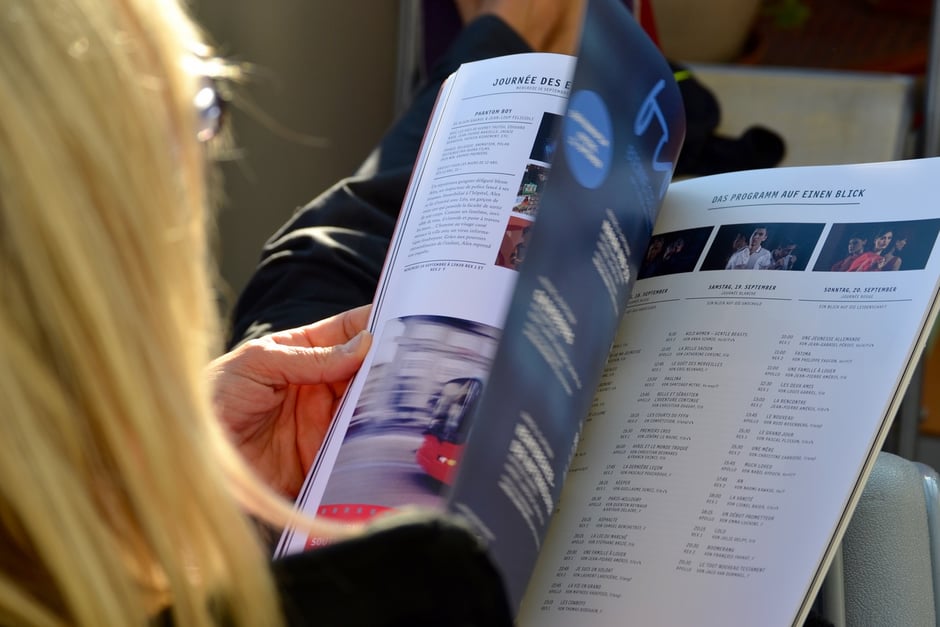So you have a print piece you need to create for your church. But where do you start? Actually, the better question to ask is “When do I start?” The answer: right away, starting with setting the deadline.
This is part of our Printing 101 series. When it comes to printing, there’s so much technical information and detail that can be confusing to understand. For this Printing 101 series, we’ve partnered with some local printers to address common questions and concerns that come up during the printing process. Hope you enjoy!
So, you have a print piece you need to create for your church. This could be an updated set of business cards, a new format for your worship bulletin, a postcard for a special event or even an annual report booklet. But, where do you start? Actually, the better question to ask is “When do I start?” The answer: right away, starting with setting the deadline.
- Set the deadline: Odds are you have a deadline for this piece, especially if it’s marked by an event like Easter or Christmas. Even if you don’t have a specific deadline, you probably have a general time in your head for when it should be completed. When creating your printing timeline, it’s best to work backwards from your deadline and PLAN AHEAD. Often churches run into sticky situations because they need things to be printed within a day or two. This lack of margin can often result in mistakes being made (everything from typos to color issues) or incurring rush fees. If you plan ahead and safely account for the right amount of time, you can absolutely avoid these unnecessary problems.
- Figure out turnaround times: Once you have your deadline, you can work backwards by figuring out the estimated print turnaround time for your specific project. This time frame begins with your submission of final files and ends with the delivery of the pieces. Turnaround times will vary depending on the type of piece you’re creating and how you're having it printed (local printer vs. online printer). Download our Printing Timeline resource to help you estimate the days needed for your specific piece and printing source. We’ve included estimated turnaround times for business cards and stationery, worship programs, brochures, booklets and magazines, postcards and direct mail, banners and posters.
- Decide if you want to use a local or online printer: Local and online printers are both great options and offer different benefits. With a local printer, you can have a personal experience with a real human being, better quality printing and more options for customization. However, the price per piece can be higher than an online printer. With an online printer, you can usually get a good deal, but you may risk losing quality and it may take quite a bit longer to get your print pieces. You need to decide what your budget is, how much you value the print quality and how much time you have to get your pieces printed.
- Consider the specs: Things like budget, size of the piece, quantity or color quality can all affect how and where you have something printed. If it’s just a small run of flyers (less than 50) that will only be up for a week, you may consider just printing in-house on your own photocopier or printer. If it’s a large booklet that has a special pocket in the back, you would definitely need to seek out professional help, probably from a local printer who can walk you through the details. If you need a high quantity of postcards for an Easter promotion, you may consider an online printer.
- Consider design time: Depending on the capacity of your team, you may be designing this piece in-house or having someone else create it for you. Keep in mind that although this doesn’t add time to the printing timeline, it does add time to the whole process. Check with your designer or agency to see how long it typically takes to design a piece like yours, and then add that to the beginning of the print timeline to get a better picture of the whole project. As a general rule, more complicated pieces like booklets and brochures will take longer to design than simple postcards and posters.
- Add some buffer time: Hindsight is 20-20, but good planning is the next best thing. We recommend giving yourself some buffer time just in case any obstacles arise during the design or production phases. (Sometimes it takes longer than expected to arrive at a final design. Sometimes printers get things wrong. Sometimes there are delays in shipping.) You will thank yourself later.
- Set the timeline: Hopefully, after working backwards from your deadline and considering all of the factors such as turnaround time, type of printer, other specs and design time, you’re way ahead of when you need to get the project started. If not, reconsider the different directions you could take and then look into rush options. You will pay a premium for these services, but you will probably be able to shorten the timeline.
